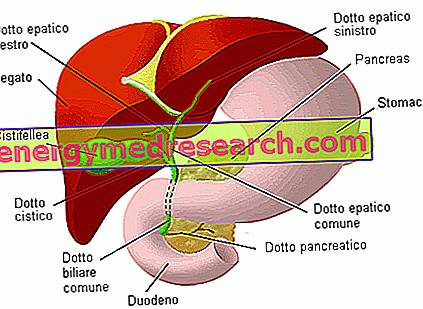Generality
We rely on our voice to inform, persuade and interact with other people. For this reason, a speech disturbance can be very limiting, interfering with the ability to communicate and with normal daily activities.
Voice disorders

People develop voice disorders due to a variety of causes, from improper use of the vocal cords to allergies, to laryngeal cancer. Among these extremes there are many clinical situations responsible for dysphonia, which must be appropriately diagnosed and treated. The various disorders of the voice that determine a total or partial phonatory incapacity therefore have a wide variability: from simple hoarseness (hoarse or dry voice) up to aphonia (complete absence of the voice).
Dysphonia
" Dysphonia " is the medical term used to indicate a generic alteration of the voice, qualitative and / or quantitative, temporary or lasting, of structural or functional origin of one or more organs involved in spoken speech. This alteration can be understood mainly as a difficulty in controlling the intonation, the timbre structure, the volume or the quality of the voice. Dysphonia can be associated with pain or discomfort while talking.
The phonation
The voice is the result of considerable and complex interactions involving multiple structures of the respiratory system (pulmonary bellows, larynx, resonance apparatus). During expiration, the air expelled from the lungs towards the trachea towards the larynx, passes gently through the glottis and determines the vibration of the vocal cords. The tension of the vocal folds varies and produces a specific range of sounds (sound waves). The intensity of the sound depends on the size of the larynx (diameter and length) and on the tension of the vocal cords, controlled by the contraction of the voluntary musculature, which changes the relative position of the thyroid and aretinoid cartilages. When the distance increases, the vocal folds tend and the intensity of the voice increases; when it decreases, the vocal cords become loose and the pitch decreases. The entire larynx is involved in phonation, since its walls vibrate, producing a composite (mixed) sound. The phenomena of amplification and resonance (quality and volume) occur thanks to the action of the larynx, oral cavity, nasal cavities and paranasal sinuses. The emission of articulated language depends, finally, on voluntary movements of the tongue, teeth, lips and cheeks. Damage to any of these structures can lead to an alteration in the production or control of the item. For example, if the vocal cords become inflamed, develop growths or become paralyzed, they may not function properly, resulting in dysphonia.
Types of Dysphonia
Voice disorders can be of origin:
- Organic : they are determined by morphological or neuromuscular alterations of one or more structures involved in phonation.
- Laryngitis (acute: viral / bacterial) - (chronic: smoking / gastroesophageal reflux / laryngeal-pharyngeal reflux);
- Congenital malformations;
- Neoplasms of the lungs, larynx, mouth, pharynx or nasal passages (precancerous: dysplasia) - (malignant: squamous cell carcinoma);
- Trauma (iatrogenic: surgery / intubation) - (accidental: penetrating / thermal);
- Metabolic or endocrine diseases (hypothyroidism / hypogonadism);
- Hematology (amyloidosis);
- Iatrogenic (inhaled corticosteroids).
- Functional : consist of an excess or a defect of the phonatory function.
- Psychogenic (muscle-tensive alterations of the larynx, weakening of the phonic musculature, functional alterations of the respiratory bellows or of an emotional-psychic nature);
- Vocal abuse;
- Idiopathic (without apparent cause).
The dysphonies of an organic nature refer to:
A dysphonia of functional origin can be:
Causes
There is a wide range of causes that can cause changes in the voice. Some of these are easy to evaluate and treat, while others require more attention, especially when they do not tend to improve over time or with standard therapies.
The causes of vocal problems can include upper respiratory infections, inflammation caused by acid reflux, improper use and vocal abuse, laryngeal nodules or papillomatosis, neuromuscular diseases (such as spasmodic dysphonia or paralysis of the vocal cords) and psychogenic conditions due to psychological trauma. It is important to remember that voice disorders are mostly reversible and can be successfully treated if diagnosed in time. Anyone can develop a dysphonia, but some professions are more susceptible: singers, teachers, doctors, lawyers, nurses, sales people, public speakers, etc.
Many factors can contribute to a voice disorder, including:
- Aging;
- Allergies;
- Cancer;
- Smoking and alcohol abuse;
- Gastroesophageal reflux disease (GERD);
- Diseases such as colds or upper respiratory infections;
- Neurological disorders;
- Psychological stress;
- Surgery or neck injury;
- Thyroid problems;
- Vocal abuse (misuse , " malmenage ") and excessive use (" surmenage ").
The diseases that most commonly present dysphonia as a symptom include:
- Laryngitis;
- Neurological disorders of the voice (spasmodic dysphonia);
- Polyps, nodules or cysts on the vocal cords (non-tumor lesions);
- Precancerous and cancerous lesions;
- Recurrent respiratory papillomatosis;
- Vocal cord paralysis, weakness or vascular lesions (hemorrhages);
- Leukoplakia.
Symptoms
Voice disorders can occur in a wide variety of ways, depending on the patient and the underlying problem. Furthermore, people can be affected differently by the same symptom. For example, an aspiring singer with a slightly diminished vocal range may experience more disturbance than a librarian with the same problem.
Commonly, dysphonia is identified with hoarseness (hoarse or dry voice), which often appears in association with inflammatory diseases or more rarely laryngeal cancers.
In reality, an altered voice may also be:
- Totally absent (aphonia) : it can characterize states of severe physical and mental exhaustion, or be an expression of bilateral paralysis of the phonatory muscles, laryngeal diphtheria or accidental inhalation of foreign bodies.
- Weak or fatigued (phonasthenia) : disorder of the voice characterized by decrease and weakening of the intensity or by interruption of the note, typical of states of fatigue of the vocal organ.
- Trembling or unstable: the voice is perceived as altered over time by tone and quality, similar to a vibration or a tremor. This voice disorder can indicate neurological damage or a muscle problem and can be associated with a variety of other conditions.
- Aspirated or whispered : some people have the sudden difficulty in uttering certain sounds or failing to pronounce words well during a conversation (they "eat the words"). This is usually due to a muscular alteration of the vocal cords that can be associated with neurological conditions.
Spasmodic dysphonia is a particular voice disorder characterized by involuntary movements or spasms of one or more laryngeal muscles, which make talking difficult, forced and choked or blown.
In association with dysphonia, there are some symptoms that need special attention, because they can indicate a serious problem:
- Persistent hoarseness (more than 2 or 3 weeks);
- Irradiated pain towards the ear;
- Swelling on the neck;
- Difficulty swallowing associated with coughing or feeling of suffocation;
- Chronic cough and sore throat (over two weeks);
- Difficulty breathing.
Diagnosis
How are voice disorders diagnosed?
The first diagnostic approach involves an accurate anamnestic investigation, to detect details related to the vocal disorder and the patient's clinical history, such as:
- duration and severity of the current problem;
- current and associated symptoms;
- relevant medical history (including medicines, respiratory allergies, presence or absence of gastro-enteric tube diseases, infections and previous surgical procedures);
- Life or professional habits at risk for the respiratory system (contact with inhaled irritants, consumption of tobacco and alcohol).
For a correct classification of the disorder, the doctor will proceed with the inspection of the throat to detect any suspicious areas: the patient is invited to open his mouth, sticking his tongue out, and at the same time pronounce a prolonged vowel sound. This procedure allows to visualize part of the wall of the pharynx and the tonsillar region.
The doctor can investigate the structures that, due to their anatomical location, are not directly visible, using technical specifications and equipment, established based on the clinical presentation of the disorder to the voice. The simple exploration can be carried out with a rigid and circular mirror, similar to a dental mirror, mounted on a long handle and inserted into the mouth. Laryngoscopy is an examination of the larynx that allows us to see the structure of the vocal cords and their movement during vibration. For a more detailed examination the doctor can use a flexible optical device (flexible laryngoscope). Further tests can investigate the cause of the problem in the voice (example: laryngeal electromyography to measure electrical currents in laryngeal muscles).
Some people suffer from hoarseness whenever they are affected by a common cold. In general, the alteration of the associated voice is not serious and is temporary, ie it tends to resolve within about two weeks after the resolution of the laryngitis. When, on the other hand, sudden and unexplained changes in the voice persist for more than 2 or 3 weeks or interfere with the normal ability to communicate, they could be a sign of a more serious problem. The same consideration is valid in the case of disturbances that seem to improve, to then reappear. In these cases, it is worthwhile to make an appointment with an otolaryngologist (specializing in diseases or disorders of the ears, nose and throat) for further evaluation and to determine the cause of the problem in the voice.
In particular, it is advisable to consult a doctor if you notice the following changes:
- The complete loss of voice lasts more than a couple of days;
- The voice is hoarse, shrill or suddenly deeper;
- The throat is often dry or painful;
- There is difficulty speaking and the need to clear the throat frequently;
- Dysphonia is associated with persistent ear pain, weight loss and loss of appetite, coughing up blood, swollen lymph nodes.
Treatment
Every attempt should be made to identify and eliminate causative or favoring factors, such as stress, smoking and alcohol. One of the most important aspects in the management of dysphonies is to follow good habits to avoid voice and throat problems: complete rest (without talking or whispering) for two or three days, avoid smoking and hydration.
If the problem with the voice proves to be severe or chronic, the treatment may include drugs, surgery, speech therapy or a combination of these interventions. The therapy can, in most cases, restore the normal voice, although it may take some time.
The therapy is closely related to the cause and severity of the pathological condition and can be:
- Medica : involves the identification and management of the factors that cause the alteration of the voice (example: allergy, infection, reflux, inhaled irritants or traumatic models). Several drugs are available for the treatment of vocal disorders. Depending on the cause of the dysphonia, the doctor may indicate medications to treat inflammation, bacterial or viral infection, gastroesophageal reflux etc. Medications can be taken orally, injected into the vocal cords or applied locally during surgery. For example, steroid injections can be given in emergencies for singers, actors and artists. Other treatments depend strictly on the specific cause, as in the case of allergy management therapy. Injections of small amounts of botulinum toxin can, on the other hand, reduce muscle spasms or abnormal movements, solving neurological movement disorders that affect the vocal muscles of the larynx (spasmodic dysphonia).
- Surgical : may include microlaryngoscopy procedures with removal of vocal cord lesions (non-tumor, precancerous and cancerous) or endoscopic resection.
- Logopedic therapy : speech therapy rehabilitation can help improve the use of the voice and avoid abuse of this (vocal education). The speech pathologist plays an important role in the evaluation and treatment of patients with voice disorders, due, for example, to Reinke's edema, vocal cord nodules and vocal abuse. The therapy will probably need a few weeks or months before the improvements are evident, so the patient must be very motivated to adhere to the complete treatment plan.



